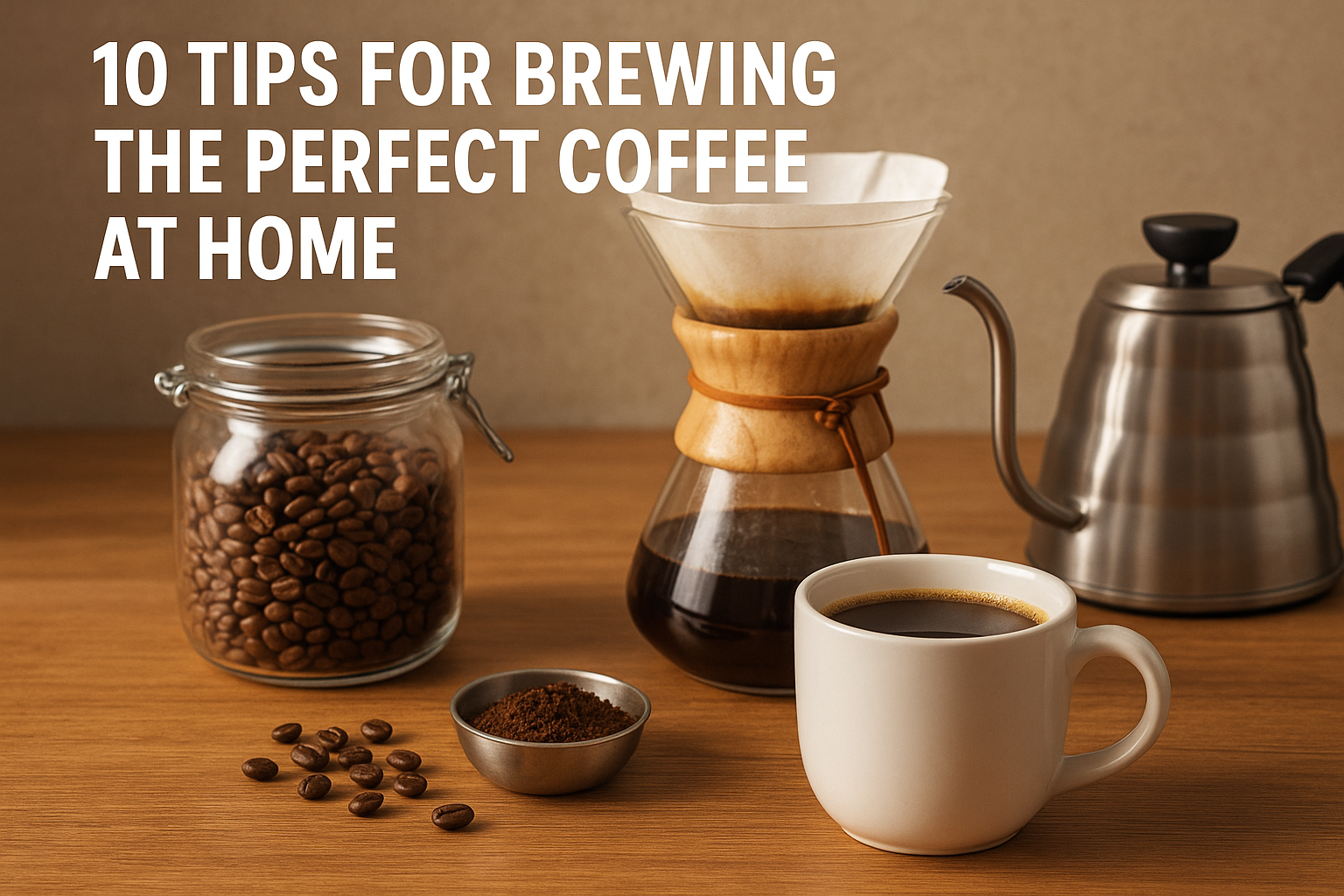Coffee is more than just a drink—it’s a ritual, a comfort, and for many, the fuel that gets the day started. While cafés and baristas can serve outstanding coffee, nothing beats the satisfaction of brewing a cup yourself that tastes just as good (or better).
The good news? You don’t need expensive equipment or years of experience to achieve coffee perfection. All you need is some knowledge, a few techniques, and a passion for the craft.
In this article, you’ll discover 10 practical tips for making coffee at home that rivals your favorite coffee shop.
1. Start with Fresh, High-Quality Beans
The foundation of great coffee is great beans. Always opt for freshly roasted coffee and check the roast date on the packaging. Ideally, use the beans within two to four weeks of roasting to capture their peak flavor. Avoid buying large quantities unless you drink coffee daily—freshness is key.
Pro tip: Store beans in an airtight container away from light, heat, and moisture. Avoid the fridge or freezer, as condensation can damage the beans.
2. Choose the Right Grind Size
Grind size makes a huge difference in the flavor of your coffee. A grind that’s too fine can make coffee taste bitter, while one that’s too coarse can make it weak and watery.
- French press: Coarse grind
- Pour-over: Medium grind
- Espresso: Fine grind
If possible, invest in a burr grinder rather than a blade grinder. Burr grinders create uniform particles, giving you better control over extraction.
3. Use the Correct Coffee-to-Water Ratio
The golden ratio for brewing coffee is generally 1 to 2 tablespoons of coffee per 6 ounces of water. However, this can be adjusted based on personal taste.
If your coffee tastes too strong, reduce the amount of grounds slightly. If it’s too weak, add more coffee.
Pro tip: Use a kitchen scale for precision—many coffee enthusiasts use a ratio of 1:15 to 1:17 (coffee to water) by weight.
4. Mind Your Water Quality
Since coffee is more than 98% water, the quality of your water matters. Tap water with strong chlorine or mineral flavors can ruin your brew. Use filtered water or bottled spring water for the best taste.
The water temperature should be between 195°F and 205°F (90°C–96°C) for optimal extraction. Too hot, and you risk bitterness; too cold, and the coffee will be under-extracted.
5. Preheat Your Equipment
Whether you’re using a French press, pour-over, or espresso machine, preheating your equipment helps maintain a stable brewing temperature. Simply rinse the brewer or mug with hot water before starting. This small step keeps your coffee hotter for longer and ensures consistent extraction.
6. Bloom Your Coffee
For pour-over and French press methods, allow your coffee to “bloom”—that is, let it release trapped carbon dioxide before brewing fully. To do this, pour a small amount of hot water over the grounds and wait 30 to 45 seconds before continuing. This process enhances flavor and aroma.
7. Experiment with Brewing Methods
Each brewing method extracts different flavors from the coffee. Try experimenting to see which method best suits your taste:
- French press: Bold, full-bodied flavor
- Pour-over: Clean, bright, and nuanced
- Espresso: Strong, concentrated, and rich
- Cold brew: Smooth and low in acidity
Switching methods occasionally can keep your coffee experience exciting.
8. Avoid Letting Coffee Sit Too Long
Brewed coffee starts to lose its best flavors within 20 minutes of being made. If you like to sip slowly, consider brewing smaller batches more frequently rather than making a large pot to last all morning.
Pro tip: If you must keep coffee warm, use a thermal carafe instead of a heating plate, which can burn the coffee and give it a bitter taste.
9. Don’t Forget to Clean Your Equipment
Old coffee oils and residue can create off-flavors in your brew. Regularly clean your coffee maker, grinder, and any other equipment with warm, soapy water, and occasionally use a coffee-specific cleaning solution. Rinse thoroughly to avoid soap residue.
10. Adjust and Refine Your Technique
Making perfect coffee is a journey. Keep track of your brewing parameters—bean type, grind size, water temperature, and brewing time—so you can adjust them over time. Even small tweaks can make a big difference.
Pro tip: Keep a coffee journal to note what works best for you. This way, you can consistently recreate your favorite cups.
Bringing It All Together
Brewing perfect coffee at home isn’t about having the most expensive gear—it’s about understanding the basics, experimenting, and finding what works best for you.
With fresh beans, the right grind size, proper water quality, and a little patience, you can enjoy café-quality coffee every day without leaving your kitchen.
Next time you brew, try implementing at least one of these tips and see how it transforms your cup.
